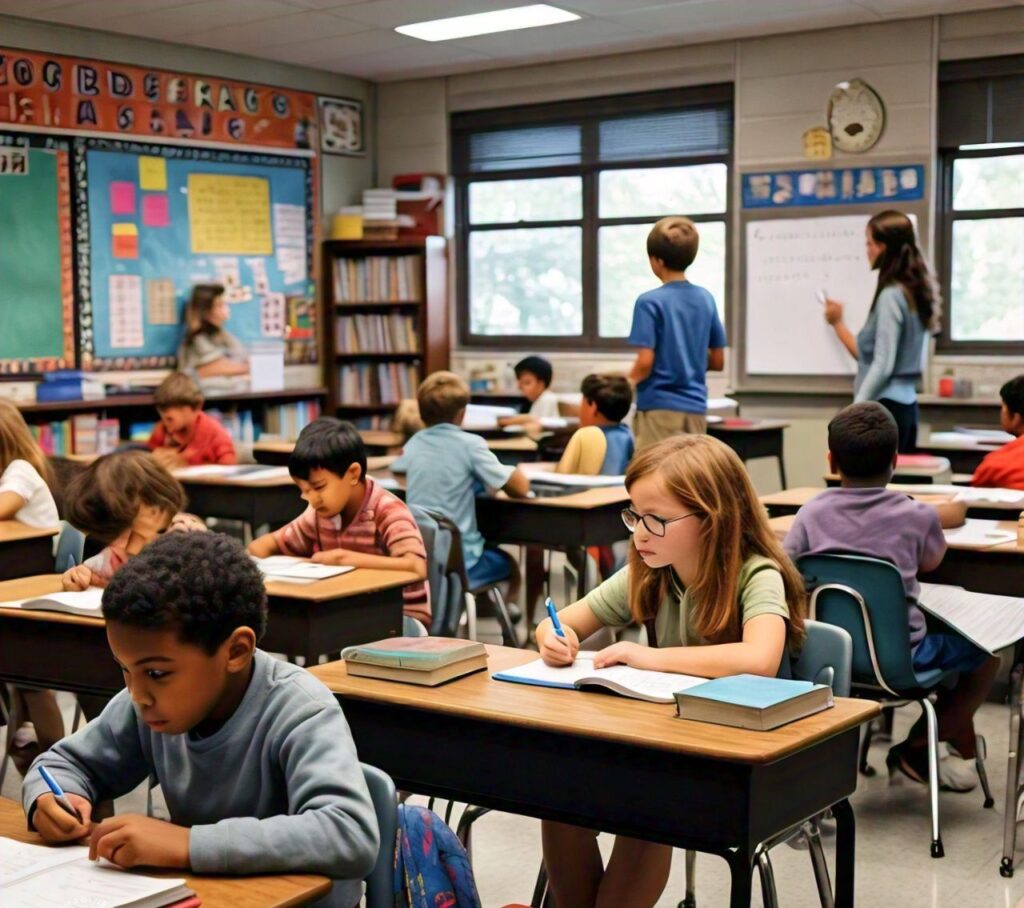Understanding the length of the school year is important for parents, students, and teachers. The number of weeks in a school year can vary by country, state, and even school. Below shows the structure of the school year around the world, specifically in the United States, and compares it with other regions.
United States
In the United States, the length of the school year is usually measured in days rather than weeks. However, it is easy to switch to weekends. The standard school year is approximately 180 days, which equals approximately 36 weeks of school.
- Days per Week: Most schools operate 5 days a week (Monday through Friday).
- Total Weeks: 180 days / 5 days per week = 36 weeks.
However, the number of weeks may vary slightly depending on a number of factors such as holidays, teachers’ working days and weather conditions.
Variations Across States
Different states in the U.S. may have slightly different requirements. For instance:
- California: Typically mandates 180 school days.
- Texas: Requires a minimum of 75,600 minutes of instruction, which often translates to around 180 days.
- New York: Also requires 180 days but may have different start and end dates compared to other states.
Some states have changed their regulations from daily to hourly, allowing for more flexibility in scheduling.
School Calendar Structure
A typical school calendar includes:
• Fall Semester: Starts in late August or early September and runs until mid-December.
• Spring Semester: Begins in early January and ends in late May or early June.
• Summer Break: Usually lasts around 10-12 weeks.
• Winter Break: Around 2 weeks in December.
• Spring Break: Usually 1 week in March or April.
• Other Holidays: Various single-day holidays and teacher in-service days.
International Comparisons
• United Kingdom: The school year in England and Wales typically has around 39 weeks, split into three terms: Autumn, Spring, and Summer.
• Australia: Divided into four terms, each lasting about 10 weeks, totaling around 40 weeks of school.
• Japan: Generally has 240 days of school per year, translating to roughly 48 weeks, with shorter summer breaks compared to Western countries.

Impact on Students and Learning
The length of the school year can impact student learning and achievement. Research shows that a longer school year helps reduce summer learning and leads to better academic engagement. But it also highlights the need for a balanced approach to prevent student violence and ensure general well-being.
Factors Influencing the School Year Length
Several factors influence the exact number of school weeks, including state regulations, holiday schedules, and unique local circumstances.
State and Local Regulations: In the United States, each state has its own Department of Education, which sets guidelines for the minimum school day. Local schools then set the calendar based on the guidelines.
For example:
- Illinois mandates 176 school days.
- Massachusetts requires 180 school days but allows schools to count professional development days as part of the total.
Holiday Schedules:
National and regional holidays can shorten the number of instructional weeks. Major holidays include:
- Thanksgiving Break: Often a full week in some districts.
- Christmas/Winter Break: Typically spans two weeks.
- Spring Break: Usually one week in March or April.
Weather and Emergencies:
In areas with severe weather conditions, schools may be closed due to snow, hurricanes or other emergencies. Many schools have added extra days to accommodate these closures without extending the school year.
Academic and Extracurricular Balances
The balance between academic requirements and extracurricular activities is also a critical consideration in the school calendar. Schools strive to:
Maximize Learning Time:
Ensuring students have sufficient instructional time to cover curriculum standards and prepare for standardized tests.
Support Extracurricular Engagement:
Offering periods for sports, arts, and other activities, which are essential for well-rounded development.
Pros and Cons of Longer School Years
Pros:
Improved Retention: Continuous learning can help mitigate the “summer slide,” where students forget some of what they learned over the extended summer break.
Better Academic Outcomes: More instructional time can lead to better understanding and mastery of subjects.
Cons:
Increased Costs: Longer school years mean higher operational costs, including salaries for teachers and staff, maintenance, and utilities.
Potential Burnout: Both students and teachers may experience burnout with shorter breaks and a more extended academic calendar.
Global Perspectives
Different countries have unique approaches to structuring their school years:
Finland:
Known for its highly effective education system, Finland has around 190 school days spread over 38-40 weeks, with relatively shorter school days compared to the U.S. This model emphasizes a balanced approach to education and student well-being.
South Korea:
Students often attend school for about 220 days a year. The school day is long, often extending into the evening with supplementary classes, reflecting the country’s high emphasis on education.
Germany:
The school year varies by state (Bundesland) but typically includes about 188-190 school days, broken into shorter terms with several breaks throughout the year.
Adaptations in the Modern Educational Landscape
In recent years, several adaptations have been made to the traditional school year structure to better meet the needs of modern students:
1. Year-Round Schooling: Some districts have adopted year-round calendars that break the year into shorter terms with more frequent breaks. This approach aims to reduce learning loss and provide more consistent educational engagement.
2. Flexible Scheduling: Online and hybrid learning models offer flexibility, allowing students to learn at their own pace. These models became especially prominent during the COVID-19 pandemic and continue to be explored for their potential long-term benefits
3. Micro-Credentials and Lifelong Learning: The focus on continuous education beyond the K-12 system has led to the rise of micro-credentials and lifelong learning programs, allowing individuals to keep upgrading their skills in a rapidly changing job market

